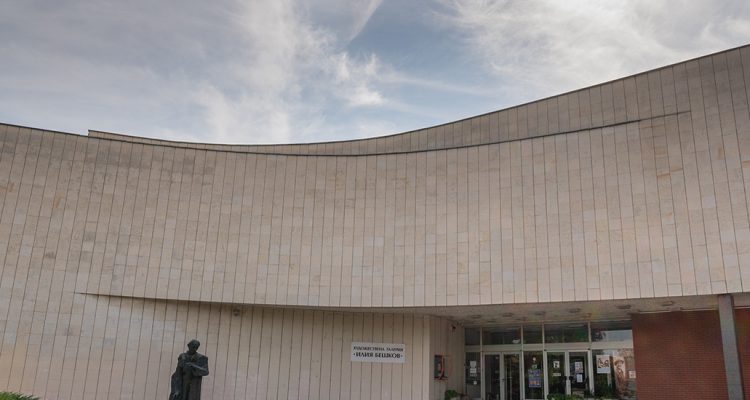Event Expired.
Night in the gallery – 2021 “Iliya Beshkov” Art Gallery

Night in the gallery will be held on May 14, Friday, 2021 from 06.30 pm in the halls of the “Iliya Beshkov” Art Gallery. Before the opening of the exhibitions, visitors will have the opportunity to listen to performances of BIG BAND – Pleven, with conductor Plamen Markov. Guests will be able to see the exhibition “Ubezhishta” (“Asylums”) and the work of Lika Yanko.
Ubezhishta
Emanuela Kovach, Vasil Kolev-Vassillo, Veselin Damyanov-Ves, Branko Nikolov and Lyudmil Georgiev
With their rich creative biography, Emanuela Kovach, Vasil Kolev-Vassillo, Veselin Damyanov-Ves, Branko Nikolov and Lyudmil Georgiev are representatives of different generations of graphic artists, but nevertheless each of them already has its established place on the art scene. The “Ubezhishta” exhibition, which includes works by the five authors, brings together their diverse plastic pursuits. Behind this wealth of possibilities of graphic art, however, there is something in common that the current exhibition is trying to show – their thematic focus on the problem of asylum.
In today’s global world, marked by waves of emigration, ethnic tensions and environmental catastrophes, the topic of asylum as a shelter, roof, nest, haunt, is becoming increasingly relevant. Refugee camps, shelters for the needy, shelters for the homeless, even the public, cultural and gambling houses are topics of constant debate in the common social space. The shelter is increasingly becoming the only home. The projections of this social phenomenon can be seen in the works of the five authors presented in the exhibition “Ubezhishta”. Everyone in their own way, consciously or not, reflects the topic in their own handwriting.
Emanuela Kovač is looking for a home in herself, Vasil Kolev-Vassillo materializes it in various architectural silhouettes. Lyudmil Georgiev embodies his idea of asylum, pushing himself away from the material world, in search of memory, vision and sleep as possible refuges. As a counterpoint to this approach are the works presented by Branko Niccolo. In them, the archetypal light of the temple, of the abstracted birch bark, can be interpreted as home. In the creative experiments of Veselin Damyanov-Ves we can see that the refuge is where we are.
This is not a specific space, but a way of perceiving the reality around us – on the back of a racing horse, in the body of a clown.
All these diverse thematic directions and plastic approaches, shown in the exhibition “Ubezhishta”, are united by one thing in common for Emanuela Kovach, Vasil Kolev-Vassillo, Veselin Damyanov-Ves, Branko Nikolov and Lyudmil Georgiev – they have chosen the art of graphics as their creative refuge.
Lika Yanko
Lika Yanko (Evangeliya Grabova) was born in Sofia on March 19, 1928. Her father, Lazar Yankov, is an Albanian public figure. She studied at the French College in Sofia and there for the first time she became acquainted with the work of artists such as Cézanne, Van Gogh, Gauguin, who later influenced her work. In 1946 she entered the Academy of Arts, majoring in painting, in the classes of Prof. Dechko Uzunov and Prof. Iliya Petrov, but never graduated.
Her first solo exhibition was in 1967 in Sofia, but was criticized by critics and prematurely terminated. Lika Yanko continued to paint, but did not exhibit her paintings until 1981, when she received an invitation to an exhibition personally from Lyudmila Zhivkova. In the mid-1970s, her paintings began to be bought by foreign embassies and were highly praised by European gallery owners.
During her entire life, Yanko made only 7 exhibitions, dying (of pneumonia) a few days after the opening of the last of them – in the Varna gallery “Kavalet”. During hier lifetime she donated 82 paintings to the Sofia City Art Gallery. In fact, the donated paintings are 80 in number, but two of them (“Still Life” and “Landscape”) subsequently, in 2004, are understood to be bilateral.
White predominates in her paintings, because according to the artist it is the color of God. In them she often encrusted beads, buttons, hemp ropes, nuts, glasses, pebbles.
In 1989 she received the Sofia Award.
Congratulation!